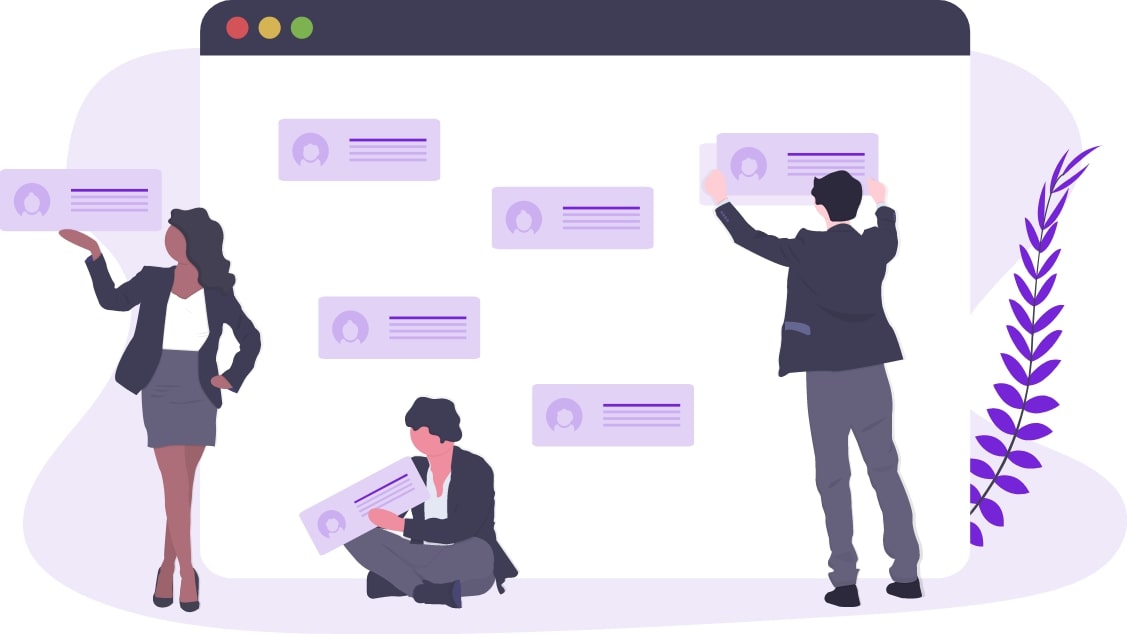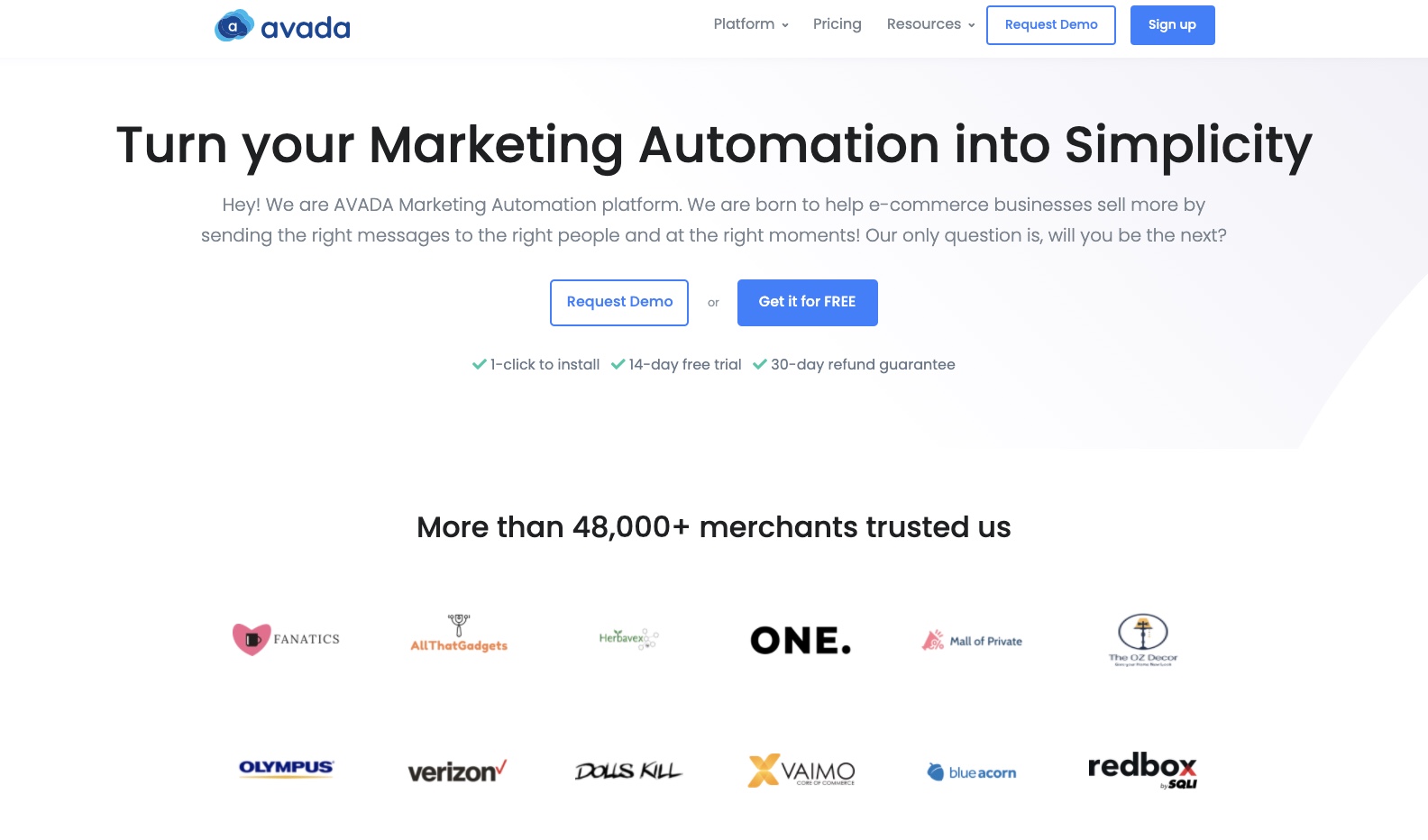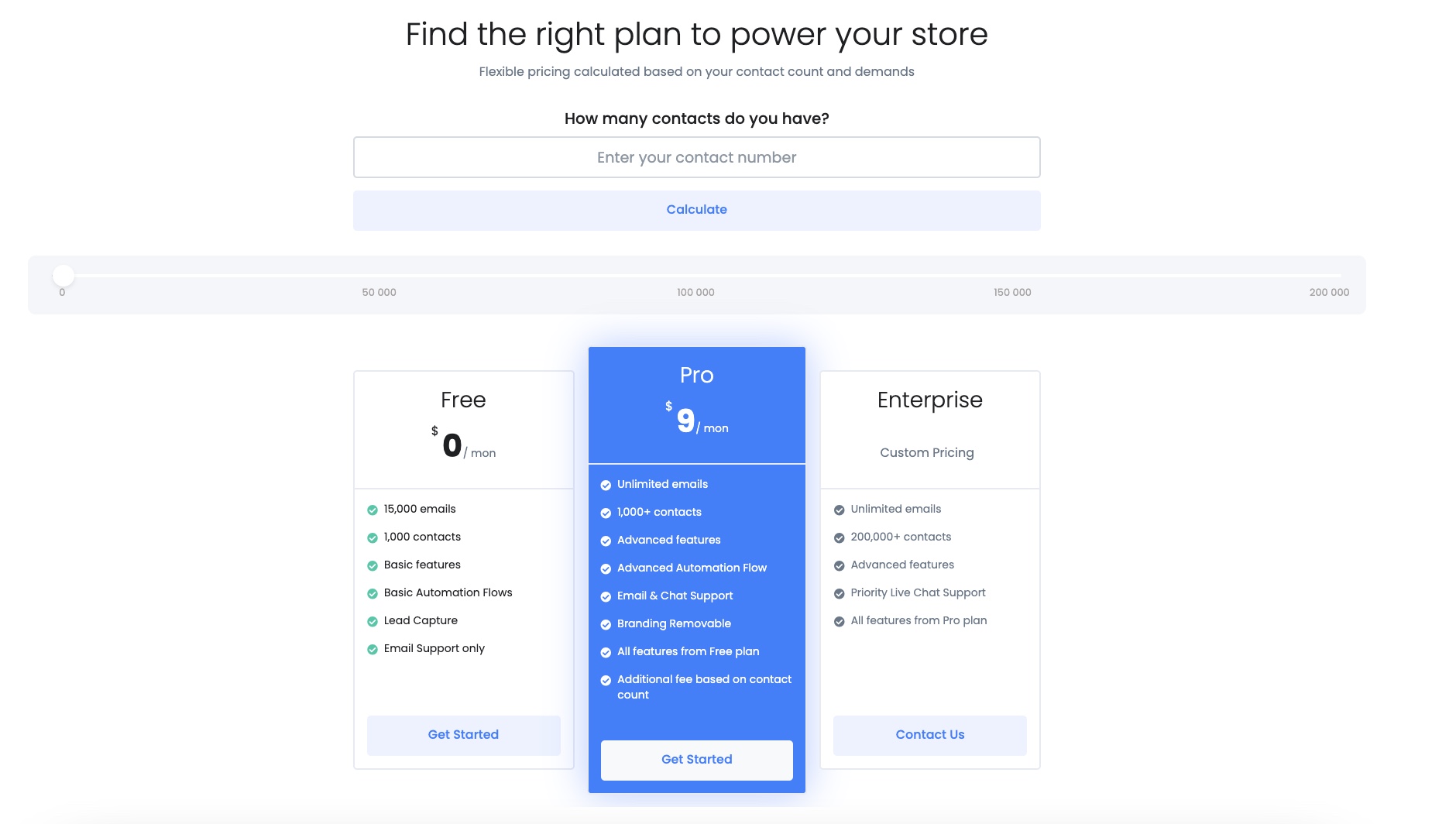How to Use Email Marketing for B2B Lead Generation
When it comes to B2B email marketing techniques, the quality of the content you offer to your audience is everything. This is easier said than done because prospects’ perceptions of the value of your content will vary. Even a highly targeted email list will contain contacts from the industry at various phases of the sales cycle.
So, how do you engage effectively with your B2B audience via email marketing to generate leads? As you may expect, there’s a lot more to it than brilliant email subject lines and intriguing content. To get the conversion rates your business deserves, your landing pages, call-to-action buttons, and forms must all be ideally aligned with your messaging. In this article, I will share with you how you can use email marketing for B2B lead generation. Let’s jump right into the details!
Why should B2B businesses use email to generate leads?

Email marketing can bring about many benefits when it comes to lead generation:
- Cost-effectiveness: When compared to other marketing channels that incur printing and advertising expenditures, email marketing is a very low-cost strategy for eCommerce businesses to address larger audiences, whether they are businesses or consumers.
- Wide reach: Email marketing is an invaluable tool for reaching out to new customers located anywhere in the world and presenting them with an attractive offer.
- Measurable outcomes: A variety of email marketing tools products can assist marketers in tracking the efficacy of their email marketing plan. This includes researching email marketing statistics based on geographical region, market reach, lead conversion ratio, and other variables.
- Simple designing and launching process: A well-executed email marketing strategy does not necessitate a lot of effort. Effective email marketing relies on relevant content developed on internal platforms, a detailed and informative email body, and market research details.
How to use email marketing for B2B lead generation
Step 1. Select the Right ESP (Email Service Provider)

This is the first and most important stage in developing your email marketing plans. ESP stands for Email Service Provider, and they are services that allow you to manage your business email account.
In other words, you can manage and run your company’s email marketing campaign with ESPs by using their email message templates, which provide options for automation, list segmentation and custom layout design. There are many great ESPs on the market today. Each of them has their own set of pre-made email templates, as well as its own set of functionality. They are included in the premium version. What you need to do is study them and pick one that fits your needs and budget.
Step 2: Define your lead generation goal

Launching a lead generation campaign can be a double-edged sword for brands who are desperate for leads. It’s easy to become enthusiastic about the prospect of new leads, but then everyone wants to get in on the action. “Can we try to generate interest in Y division while you’re out attracting new leads for X product?”
However, it is vital that the foundation of your campaign be built around a single, clear aim or purpose. The more focused your objective is, the more successful you will be. If you dilute your goals, your campaign will be more likely to fail to achieve any of the objectives you set out to attain.
So, what is an appropriate lead generation objective? Here are a few concrete examples:
- A SaaS company with a product portfolio concentrates on generating leads for a single software package.
- A service provider begins a campaign to market its products and services to a new market, such as SEO for accountancy firms.
- A company that creates content campaigns sets a goal of connecting with the Chief Marketing Officer of companies with annual revenues of more than $2 million in eight different industries.
Do not proceed until you can articulate your purpose in one or two sentences. Remember that after you’ve mastered this, you can apply the same strategy to drive growth in other aspects of your company.
Step 3: Grow a quality email list

Lead generation experts will frequently advise you that your finest efforts will only provide results that are proportional to the quality of your list. If any of the following items appear on your list, you are likely to fall short:
- Contact information that is no longer used
- names or titles that are no longer used
- Companies that are no longer in operation
- Companies that are no longer active in the market you’re targeting
- Companies with a shifted focus
- Geographical data that is incorrect
- Companies that do not meet your target demographic
You can grow your lists in a variety of methods, including developing your own, joining industry associations, and contacting businesses. When purchasing a list, it is critical to understand how active the list is, how frequently it is updated, and what quality assurance processes they employ to vet their lists. Wherever possible, I would recommend targeting a smaller sample of ideal targets with which you are interested in doing business.
Take advantage of the fact that you have complete control over which businesses you send your message to. However, in other industries, lead generation is a numbers game. The most crucial component of a list is that it is based on excellent information, both in terms of recency and accuracy.
Finally, think about your company’s structure and come up with four or five titles that you could target. If you work in IT, you might write to the CTO (Chief Technology Officer), the DOI (Director of IT) or even the office manager. This changes greatly depending on the size and sort of target you’re aiming for, but design a cluster of job titles with this role in mind.
Step 4: Draft a short, tight sales pitch

I’ll qualify this by saying that there is no single correct strategy here. Long sales letters work successfully for certain people. Others want highly targeted prospecting messages that demonstrate a thorough understanding of the company. However, for the purposes of this step, I recommend that you create a very personalized and specific message.
Here are a basic guideline for crafting your pitch:
- Contains a carefully prepared value proposition designed with your specific audience in mind. For example, the subject should be addressed to a company’s CMO or sourcing manager. The more particular to the person’s concerns and issues, the better.
- Spend a good amount of time on your headlines and openers. It is vital that you hold the reader’s interest and keep them reading.
- Take the most benefit-driven copywriting approach feasible.
- Use real-world customer data and samples, such as client names, statistics, and testimonials.
- Avoid cliches.
- Write in a relaxed, friendly, and conversational tone. Avoid the use of jargon and formal business terminology.
- Finish with a powerful call to action.
In some ways, this is copywriting 101. At the same time, delivering this in fewer than 300 words is a writing feat of epic proportions. If you succeed, you will have a piece of copy that not only generates leads but can also be used in other places.
Step 5: Close your email tactfully

The process can break down when you respond to the message with a cc to the right individual. When you have an opportunity, resist the impulse to send a presentation or brochure, or a lengthy email explaining why you’re contacting. Instead, take use of this opportunity to create personal contact with your potential prospect.
Request to speak with them on the phone, even if only for 15 or 20 minutes. You’ve then progressed them through the funnel from cold contact to lukewarm lead, and you’re ready to seal the deal using your sales process.
It is not a foolproof procedure. It does not always work, and it is dependent on how good your content is, how tailored your message is to your prospect, and how persistent and focused your outreach has been. However, especially in B2B industries, this email marketing strategy can assist you in making new contacts and initiating conversations with potential leads.
Step 6: Automate your emails

Automation for B2B marketing in general is seen as “above average importance” by 48% of B2B firms, and it’s easy to see why when it can help you produce twice as many business leads! However, only 13% of B2B businesses use automation to assist with email marketing.
It all starts with a decent ESP that supports automation; all of the better ones do, so get yourself one that is ready to go! Then decide what you’d like to automate. The greatest emails to automate are those that are responsive—when someone completes a specific activity, they automatically receive an email.
This allows you to create workflows such that if you send an email campaign and a prospect opens it and clicks through, an automated email sent in response to that click continues the discussion and increases the likelihood of conversion.
Automation takes time to set up and must be checked on a regular basis to ensure subject lines and copy stay appealing to the reader, but once set up, automation will save you a lot of time and resources.
3 Tips to improve your email lead generation
1. Offer value and make it highly visible

The key to converting prospects into leads via email is to provide value. The value given by B2B products and services is typically in the form of content. This is referred to as email content marketing. The content you send can vary significantly, but it should be instructional in nature.
You can send brief blog posts, relevant industry news, webinar invitations, video links, industry reports, white papers, and so on. By delivering your prospects content that is of value to them, they will begin to regard you as an authority in your field and will eventually turn to you when they are ready to make a purchase.
When providing value in your B2B marketing emails, make it the main focus of the entire message. People enjoy receiving presents, which is essentially what you are doing by providing your material. Make this clear, and your prospects will thank you with a purchase.
2. Think about how your emails are viewed in email clients

Consider your own inbox. When you open several of your emails, you will most certainly get a notification informing you that some photos have been blocked. Most email clients (including Outlook) now offer the option to disable image display by default, so keep this in mind when creating marketing emails. Make certain that any vital information does not appear solely in an image.
It is also beneficial to consider the display window in which you view your emails. Most of us view our emails in a preview window, so we only see a section of the content at a time. Many individuals only read the first line of an email before determining whether or not to delete it, so if your prospect does not notice something of value right away, you may wind up in the trash.
Make sure the value you’re providing in your email (whether it’s a sale announcement, an educational webcast, a new blog post, or something else) is immediately evident and apparent within the limited preview frame of most email apps.
3. Analyze and refine constantly

Once you’ve created your lead generation email, make sure it sticks out. Open it up and compare it to the emails of your competitors that have comparable aims or calls to action. Is the quality of your graphics adequate, or do they appear outdated in comparison?
Is your overall message consistent with theirs? Is your point of differentiation clear and obvious? What is it about your email that makes it stand out from the crowd? If you don’t know, it’s time to go back to the drawing board.
Use AVADA Email Marketing Automation For B2B Lead Generation

AVADA Marketing Automation is a multi-channel email and SMS marketing platform that can help you generate B2B leads for your business. Main features include:
- Lead capture
- List segmentation
- Abandoned cart saver
- Drag-and-drop email builder
- Email Automated workflows
- Advanced data tracking.
This tool is very suitable for startups and small businesses due to its user-friendliness and affordability. Paid plans start at $9/month for 1,000 subscribers, unlimited emails and full features. There’s a free forever plan for 15,000 emails and 1,000 subscribers that you can use to try out the app. Sign up now!

Final words
That’s it! I hope this article has provided you with valuable information about how to use email marketing to generate leads for your business. Please feel free to leave comments below for further discussion on this topic. :-)
New Posts

How To Set Up Google Analytics 4 For Your BigCommerce Store






